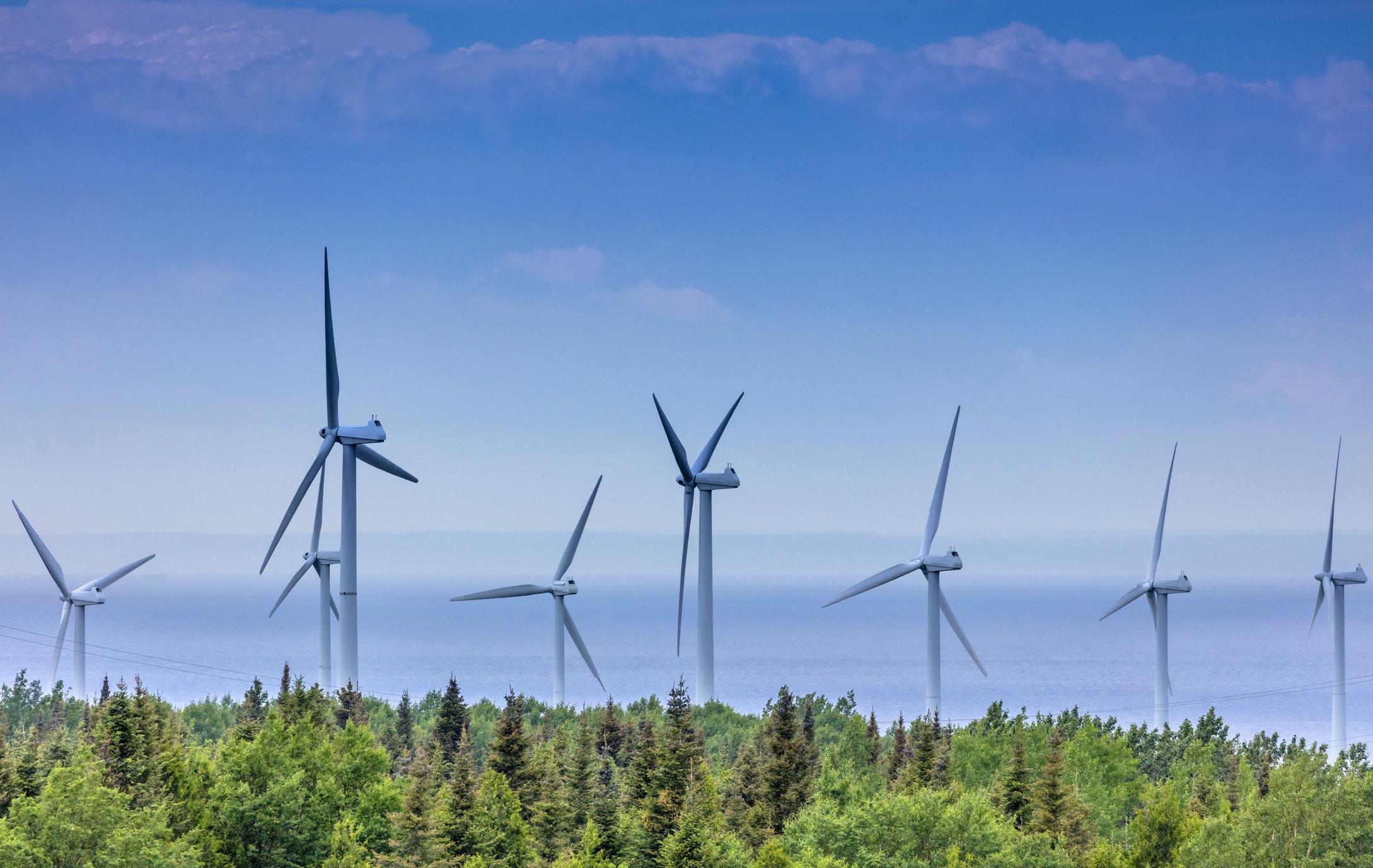Quebec begins a red-carpet roll-out for renewable energy

By Margret Nelliserry, BRC-Canada Analyst
January 11, 2024
If you work in the renewable energy industry, as a developer or a buyer, chances are you’ve had your head turned recently by Quebec.
The province is promoting a tantalizing plan to boost clean energy production and it’s deploying some eye-popping numbers that are drawing attention. The province will spend up to $110 billion between now and 2035 on new infrastructure to generate and transport renewable energy to help the province transition from fossil fuels, says Hydro-Québec, the government-owned utility leading the energy transition.1 This involves tripling wind energy by adding 10,000 megawatts by 2035. In addition, they will need to build 5,000 kilometres of new power lines.2
Quebec's electricity is already among the cleanest in Canada. With almost 94 per cent generated by hydropower and five per cent by wind power, 99 per cent of the electricity produced in Quebec is from renewable energy.3
Recently, though, Hydro-Québec estimated that Quebec would need to double its current annual generating capacity in the range of 150 to 200 terawatt-hours of additional electricity, to adhere to the province's 2050 climate commitments . This is mainly owing to the export deals made with the U.S. and manufacturers coming into Quebec for affordable, renewable energy.2,4
More than half of Hydro-Québec's generating capacity is already consumed by large-scale industrial and commercial power users, impacting the usage of residential Quebeckers. While adding more dams and transmission lines could solve this issue, hydropower has substantial environmental and social implications for the province that require strong consideration. Hydro-Québec's Dave Rheaume, executive vice president of Energy Planning and Customer Experience, highlights that adding wind farms and refurbishing power plants in the next decade is essential to meet the increased demand.4
The province's electricity supply plan for 2023-2032 anticipates an increase of 25 TWh of electricity demand, a 14 per cent increase over that period, which is mainly attributed to energy transition initiatives. To meet this long-term electricity demand, the province will need to add additional capacity and energy to its portfolio. Hydro-Québec, in 2023, issued a tender call for 1,500 MW of wind power to be introduced between 2027 and 2029. The draft for this process and the selection of projects was scheduled to be released by the end of 2023.5
Overall, the province plans to double its clean energy capacity and reduce reliance on fossil fuels. Currently, fossil fuels account for half of the energy consumed in Quebec. Another 42 per cent consists of electricity, while biofuels contributes the remaining eight per cent. So, to tackle this, the province plans to electrify significant sectors like transportation, buildings, and other industries, aiming to replace fossil fuels with clean electricity.2,6 Tripling the utility's spending on investments and operating expenses to $12 billion to $16 billion annually, Hydro-Québec plans to finance one-third of the spending from internal cash flows, and the remainder will be from external financing. Michael Sabia, Hydro-Québec’s chief executive, highlighted that they are open to looking at financing sources Hydro-Québec has not previously used.5
The Montreal Economic Institute responded to this update, highlighting that independent electricity producers will be key to Quebec achieving its energy. The Institute added the provincial government should consider allowing these independent producers to sell their energy directly to commercial and industrial consumers to amplify the uptake of renewables.5 Other provinces, like Ontario and Saskatchewan, are also exploring this potential. (Jurisdictions interested in exploring how to make this work can check out our fact sheet Designing Programs for Corporate Renewables Procurement and our recent video on Enabling Corporate Renewable Energy Procurement Across Canada.)
The province's strong supply of renewable energy has also been attracting clean-tech investment to Quebec at an all-time high rate. Taking advantage of its rich critical mineral resources and electric vehicle supply chain, the province is persuading automobile companies and battery manufacturers to invest around $15 billion in Quebec to help diversify their supply chains. (You can learn more about critical minerals from our recent blog on the subject.) The province has developed a strategy to promote the abundance of critical minerals like lithium, nickel, and graphite — minerals needed for batteries — and has enabled the investment of $15 billion in the last three years from companies like GM, POSCO and Ford Motors. Another $15-billion investment for the next three years was announced towards the end of 2023 with the Swedish battery maker Northvolt planning on building a $5.2-billion battery plant in the province.7
Due to its supply of renewable energy, Quebec has the potential to produce the most environmentally-friendly EVs and batteries and this makes the province a viable alternative to help diversify the EV and battery supply chain. The batteries produced by Northvolt will be among the greenest in the world because the manufacturing will be powered almost entirely by clean electricity. Quebec is also working closely with Volta Energy Solutions Canada Inc. to build a new copper foil factory in Granby. Copper foils, an important component in EV batteries, will enable the country to play a key role in EV manufacturing.8
Investments like these add to the efforts of decarbonizing the country and positively impact the economy by bringing tens of thousands of jobs and adding billions to the GDP annually. We can expect Hydro-Québec’s call for power to meet the 14 per cent increase in Quebec's electricity demand and the province’s plan to electrify other industries to bring even more investment to the province!
